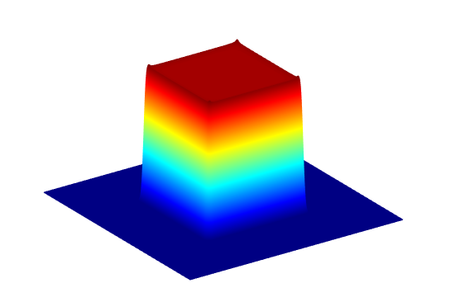
The radiance profile from most lasers deployed in the industry has a Gaussian profile that is described by an equation of the same form as the bell curve widely used in basic statistics. The Gaussian equation is described by a central maximum with slow decaying edges that never reach the zero value, at least mathematically speaking. Thus, a beam with this profile is considered to have no hard boundaries so light can creep farther beyond the size of the expected focal spot.
In many cases, especially where power is limited and expensive, this irradiance behavior is not acceptable or is simply undesirable. In such cases, system designers can resort to what is referred to as a laser beam shaper. A laser beam shaper is a flat window-like component that is placed along the optical path, usually before the focusing optic. Its purpose is to transform the Gaussian irradiance into an irradiance pattern that is characterized by well-defined edges as well as a more uniform illumination. The types of laser beam shapers that can be used are the following:
- Microlens array.
- Broadband diffusers.
- Top Hat Beam Shaper.
- Diffractive Diffuser.
Microlens arrays are the most common type of laser beam shapers but it is also the option that is the most limited. It does indeed reduce the Gaussian irradiance appearance, but its best performance is obtained when the beam is slightly defocused. On the other hand, since it works on the principle of light refraction it can work equally well with polychromatic light.
A broadband diffuser is basically a microlens array but with the added feature that each lenslet can have a different focal length which is assigned based on a predefined statistical distribution. This gives a broadband diffuser powerful design freedom that boosts performance and adds other capabilities. For this reason, a broadband diffuser is also known as an engineered diffuser.
A Top Hat, or Flat Top, Beam shaper is the best option when the input light is monochromatic and highly coherent, as is the case in many high power laser systems. Unlike the previous two examples, a Top Hat Beam shaper is based on Diffractive Optics so wave optics has to be used for the design and analysis of this component. During the design process, the function to transform a Gaussian irradiance into a beam with hard edges is encoded into Diffractive Optical Element or DOE. Moreover, the final beam can have any geometrical shape.
Finally, a Diffractive Diffuser is a component similar to the one above only that in this case the DOE is designed to work with sources that are less coherent. It works by mixing the input beam to obtain a speckle free output beam so the irradiance has a good homogeneity.
